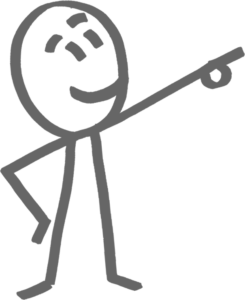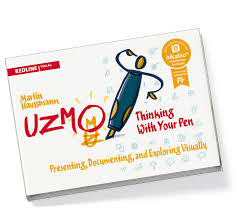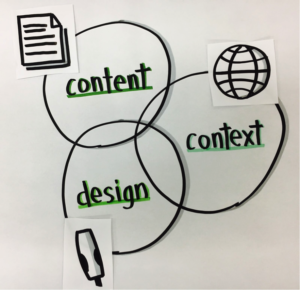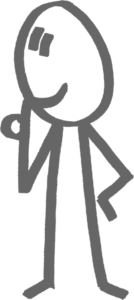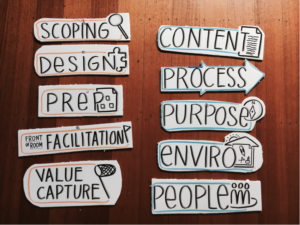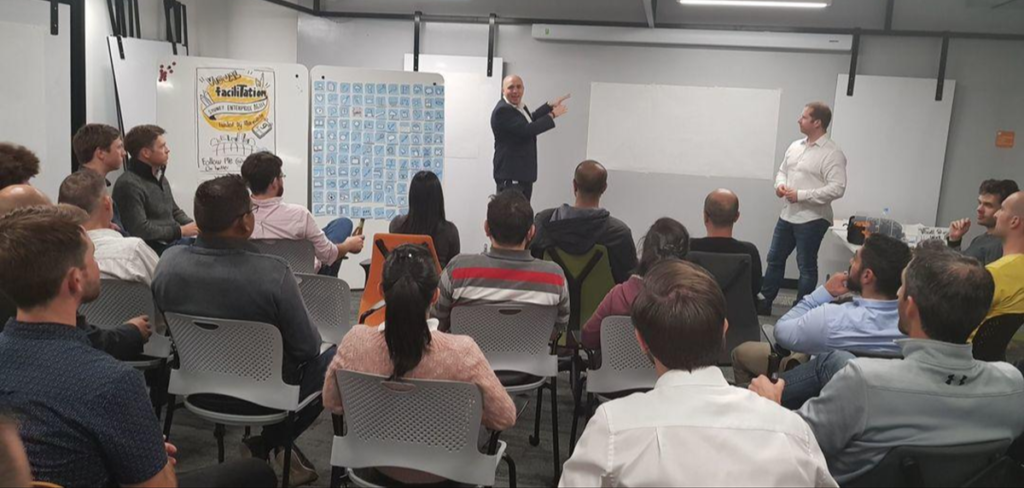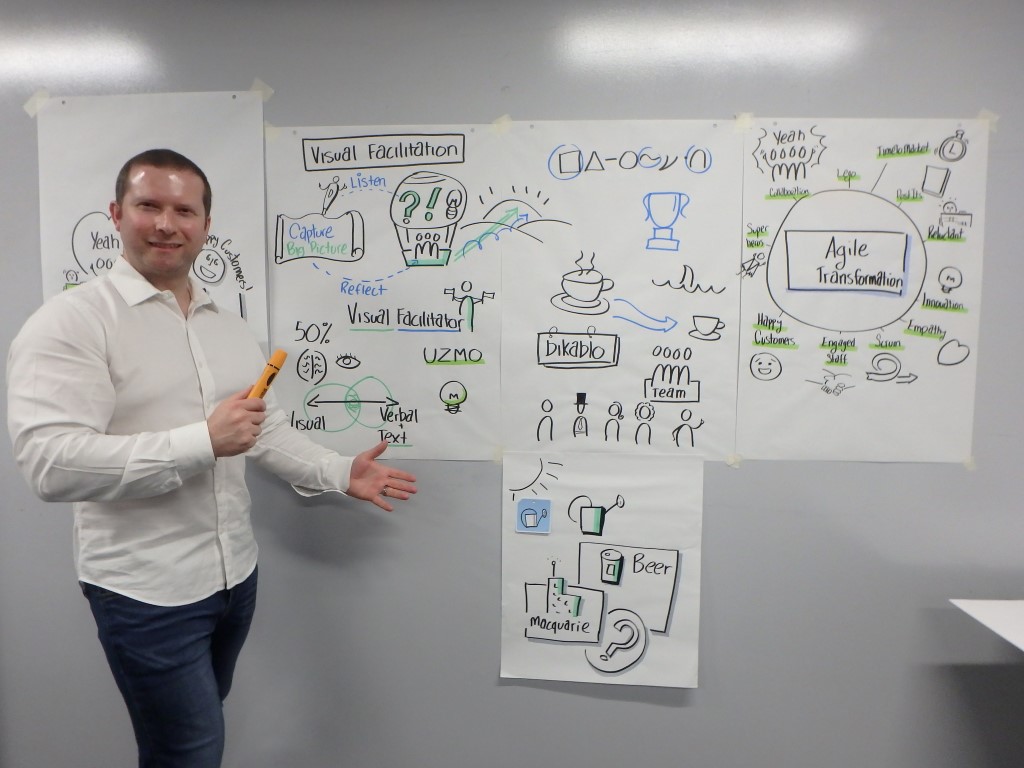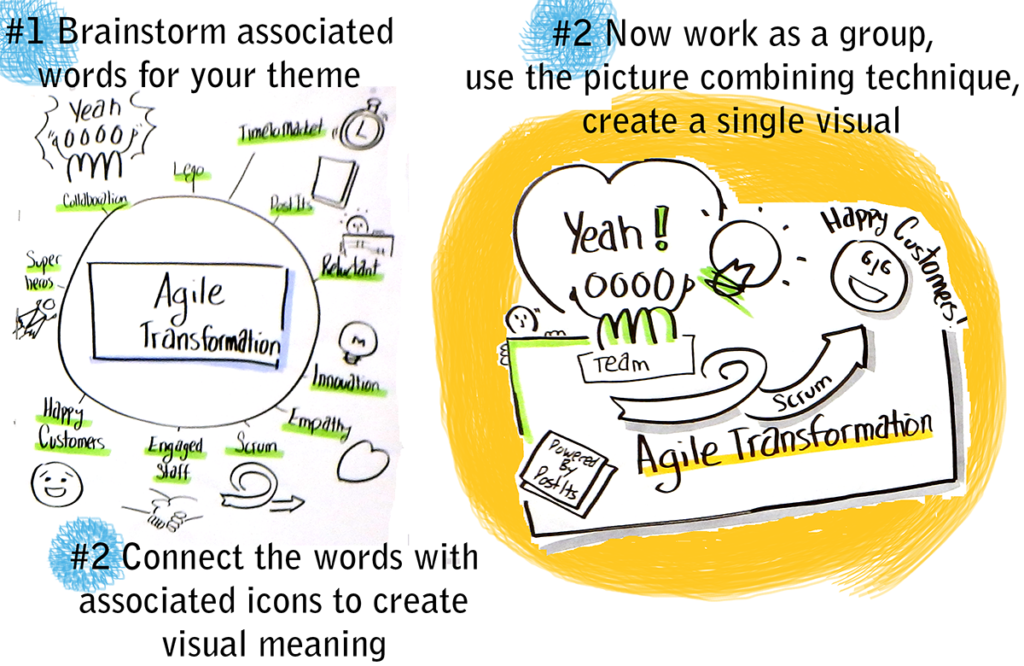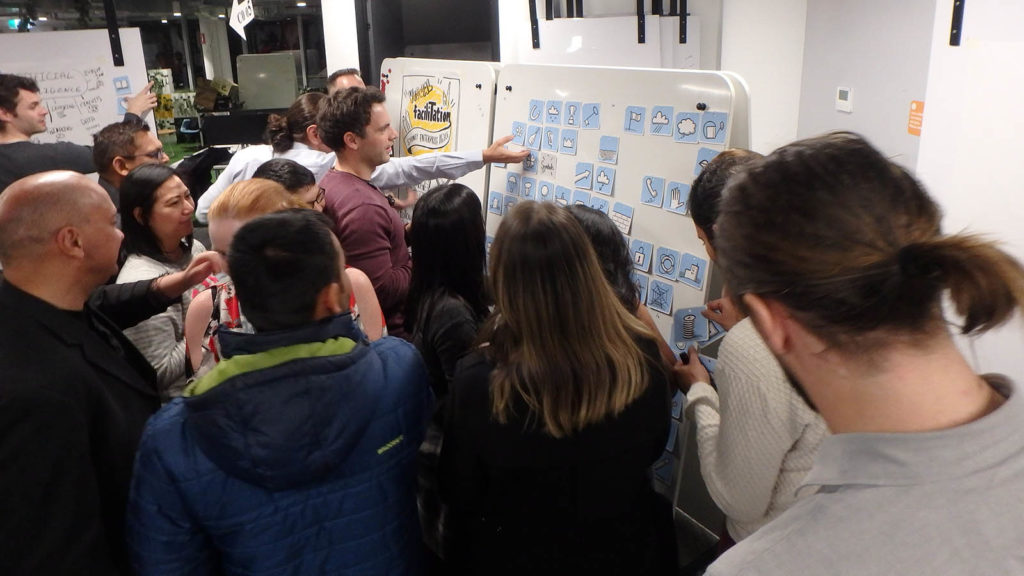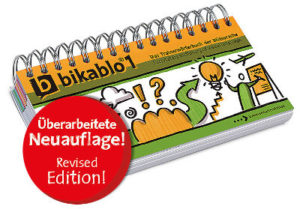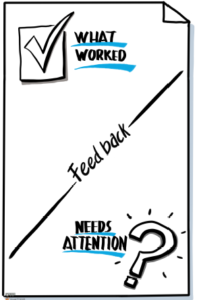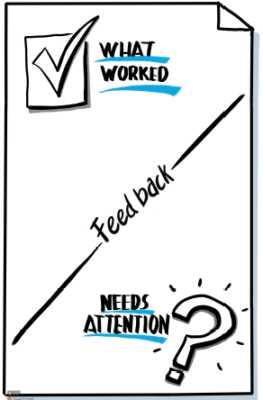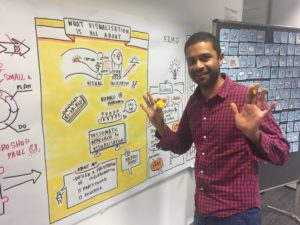You have learnt to draw using the bikablo® technique and if not come to one of our next training. You know now that it is so much more powerful to convey your message with words and pictures and that it enables a much higher level of collaboration because you use all four modalities to communicate. Someone speaks and you listen. But you also visualise it and if you share the pen and draw together with you actually have a kinaesthetic experience together. There is no better way to communicate and collaborate with a pen on the whiteboard. However, when you are back at your company you need to connect with others inside your company to start the visual revolution. For that we suggest three steps to spark the change:
Step #1 – Let’s run a brown bag session at your company
Step #2 – Through that, you will be able to identify your visual friends inside your company
Step #3 – Host a Lunch & Learn to connect, learn and help each other working on a whiteboard.
I hope this episode helps you to find your visual friends inside your company and we would like to point out that the first three people who book a brown bag session will get this workshop for free. Just book your brown bag session here.






